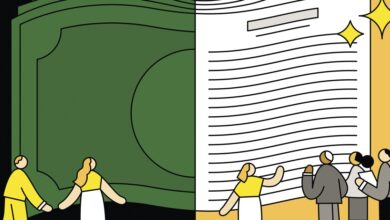Growing Out-of-State Enrollment at Flagship Universities Could Be Worsening the Student-Debt Crisis

A recent report from the Brookings Institution found that nearly every state flagship university increased its share of out-of-state students from 2002 to 2018, a trend that has contributed to the ballooning of student-loan debt across the country. “The Great Student Swap,” as the study calls it, may have increased the total tuition paid by students at just 16 flagships by roughly $57 billion over the 16-year period.
“The premise of public flagships is having a high-quality university that is accessible for the best and brightest of their state and, to some degree, subsidized by their state taxpayers,” said Aaron D. Klein, the study’s author and a senior fellow in economic studies at Brookings, a research organization.
But Klein said the student swap is creating a vicious cycle in which flagships expand their share of out-of-state students and increase tuition revenues in the short term but lose state support in the process. And as state subsidies wane with the share of in-state students, those universities rely more on those out-of-state dollars.
“And the cycle continues,” Klein said. “I don’t know where this chicken and egg started, but it has to stop.”
A 2019 report from the Joyce Foundation, a policy-research group focused on equity, hinted at this cycle. The paper stated that high-achieving, low-income students may be under-recruited by public universities that are looking out of state for wealthier students, though that assertion was challenged by the institutions the report singled out.
Only two state flagships did not experience some rise in their share of out-of-state students during the period examined in the Brookings report, but 30 out of 50 saw at least a 25-percent increase. The University of Delaware, one of the two flagships whose in-state enrollment held steady, already had a majority of out-of-state students in 2002.
The other, the University of North Carolina at Chapel Hill, has policies in place that Klein said pose a possible solution to the student-swap dilemma and could help chip away at skyrocketing student debt.
In 1986 the University of North Carolina system’s Board of Governors adopted a rule that no more than 18 percent of the institution’s freshman class should be from out of state. When the Chapel Hill campus broke that rule once, it was fined $1 million. Klein said that his research showed the cap had not limited the university, which has maintained a high national ranking, according to U.S. News & World Report, and a competitive acceptance rate.
“That method has worked and has kept the cost of college down for Carolinians,” Klein said. “And certainly the University of North Carolina at Chapel Hill has prospered even under that rule.”
Klein also cited the University of Texas at Austin as an institution that has maintained high rates of in-state enrollment. Its portion of in-state students had dropped minimally — from 91 percent in 2002 to 89 percent in 2018 — due to a state law requiring public universities to automatically admit the top students of every Texas high school’s graduating class. Klein said the law also had improved equity and diversity at Texas public colleges, and had created a pipeline for potential students from primarily minority communities to attend the Texas flagship.
Klein said the student swap has had a disproportionate impact on students of color, who are more likely to shoulder greater debt to attend college.
“Other research has shown that some flagship universities went out of their way to increase their marketing and outreach to affluent, out-of-state students in affluent communities,” Klein said.
When colleges court out-of-state students who can afford higher tuition, Klein said, it’s low-income, in-state students who are left behind.
Source link






